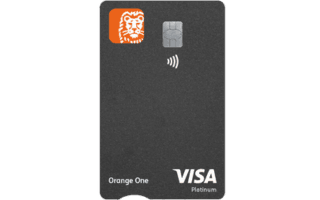How to use apps to manage expenses and investments

Understanding the Importance of Financial Apps
In today’s fast-paced financial landscape, leveraging technology is essential for effective money management. Apps designed for expense tracking and investment management have become invaluable tools for individuals seeking to gain control over their finances. These applications not only assist users in organizing their financial data but also enhance their overall financial literacy and decision-making capabilities.
Key Features and Benefits
These digital solutions provide features that simplify the process of budgeting and investing, making them indispensable for anyone aiming to improve their financial health. Some key benefits include:
- Real-time tracking: Users can monitor their expenses as they occur, allowing for timely insights into spending habits. This feature helps individuals identify unnecessary expenditures and reallocate funds towards savings or investments.
- Investment analysis tools: Many apps provide detailed performance metrics, enabling users to assess their investment portfolios. With features that analyze trends, forecast potential changes in market conditions, and suggest actionable strategies, users are better equipped to make informed investment decisions.
- User-friendly interfaces: Designed to be intuitive, these apps allow even novices to navigate their financial landscape with ease. For instance, drag-and-drop interfaces and interactive graphs simplify complex data, making it accessible to all users, regardless of their technical proficiency.
Prominent Financial Apps in Australia
In Australia, the app market is ripe with options tailored to local needs, catering specifically to the unique financial habits of Australians. Notable examples include:
- MoneyBrilliant: This app offers automated tracking of bank transactions and allows users to set specific budgeting goals. By consolidating all financial data in one place, it enables users to see a holistic view of their spending and saving patterns.
- Raiz: Facilitating micro-investing, Raiz enables users to invest small amounts of money in diversified portfolios. This platform is particularly advantageous for young Australians looking to grow their wealth gradually without committing large sums upfront.
- Pocketbook: An Australian favourite for categorizing and tracking everyday expenses, Pocketbook syncs with bank accounts to provide real-time analysis of spending habits. Not only does it help users understand their financial behaviour, but it also provides insights to adjust their future spending.
Using Financial Apps for Sustainable Financial Growth
By integrating these apps into your financial routine, you can achieve not just clarity but also stability in your financial journey. They serve as powerful allies in developing a disciplined approach to both expense management and investment growth. Understanding how to leverage these tools effectively is crucial for long-term success, as they can lead to a more structured and informed financial life. Moreover, the real-time data provided by these applications empowers users to make choices that align with their financial goals, fostering a proactive rather than reactive approach to personal finance.
CHECK OUT: Click here to explore more
Harnessing Technology for Financial Tracking
Utilizing financial apps can significantly enhance your ability to manage and monitor both expenses and investments. To maximize the effectiveness of these applications, it is crucial to understand how to harness their full potential. This encompasses selecting the right app that aligns with your personal financial goals, establishing a routine for regular engagement with the app, and utilizing its features to inform your financial decisions.
Selecting the Right App
When choosing a financial app, consider the specific functionalities that meet your requirements. Features can vary widely among apps, and identifying those that resonate with your financial management style is essential. Here are several aspects to evaluate before making a choice:
- Integration capabilities: Ensure the app can connect with your bank accounts, credit cards, and other financial platforms. This allows for automatic data syncing, which is vital for real-time expense tracking.
- Customization options: Look for applications that allow personalization in terms of budgeting categories, investment goals, and risk tolerance levels. Tailoring the app to your financial landscape enhances its utility.
- Security features: Prioritize applications that prioritize user security, such as two-factor authentication and data encryption. Protecting your sensitive financial information should always be a top concern.
- Support and resources: Consider whether the app offers additional resources such as customer support, community forums, or educational materials that can help you deepen your financial knowledge and solve any issues that may arise.
Establishing a Routine
To reap the full benefits of financial apps, establishing a consistent routine is vital. Regular engagement with these tools not only enhances your understanding of your financial position but also enables better decision-making. Some best practices include:
- Daily tracking: Make it a habit to log in to your app daily to review your spending and investments. This helps to identify patterns and makes skimming through transactions easier.
- Periodic reviews: Set aside time weekly or monthly to analyze your financial data. Compare it against your budgets, assess your investment performance, and adjust your strategies if necessary. This reflexive approach can significantly bolster your financial management efforts.
- Stay informed: Utilize the educational components of apps. Many applications provide articles or tutorials on financial literacy, investment strategies, and budgeting tips that can further enhance your financial acumen.
Maximizing Features for Informed Decision-Making
Each financial app comes equipped with features designed to assist users in making informed decisions. Leveraging tools such as analytics dashboards, graphical data representations, and alerts for overspending or investment opportunities can substantially improve your financial oversight. By actively utilizing these features, you gain access to real-time feedback on your financial behaviour, enabling you to make timely adjustments to your spending habits and investment strategies. This proactive approach positions you for sustainable financial growth and a deeper understanding of your economic landscape.
SEE ALSO: Click here to read another article
Advanced Strategies for Effective Financial Management
Integrating financial apps into your daily routine can mark a significant improvement in managing expenses and investments. However, optimizing their use requires more than just basic engagement. To fully leverage these technologies, consider adopting advanced strategies that deepen your financial insights and enhance your decision-making processes. Here are key areas to explore:
Utilizing Budgeting Tools
Your chosen financial app likely offers built-in budgeting tools designed to help you allocate resources effectively. To take full advantage of these tools, follow these steps:
- Create a detailed budget: Start by categorizing your expenses into fixed, variable, and discretionary categories. This granularity allows you to monitor specific areas of spending closely and adjust as needed.
- Set realistic spending limits: Use historical data provided by the app to inform your budgeting decisions. Establish spending limits based on previous behaviour, ensuring they are practical and achievable.
- Track cash flow: Take note of your income against your expenses to ensure positive cash flow. Most financial apps feature cash flow forecasting, allowing you to anticipate shortfalls and plan accordingly.
Investment Insights and Analytics
Modern financial apps provide powerful analytics tools that go beyond simple tracking. To utilize these insights effectively, consider the following:
- Portfolio tracking: Regularly assess your investment portfolio using the analytics offered by the app. Evaluate the composition of your assets and consider diversification strategies to minimize risks while maximizing returns.
- Performance benchmarks: Use the app’s features to evaluate your investment performance against market benchmarks. Understanding your returns in the context of broader economic trends can inform future investment decisions.
- Automate monitoring: Many apps allow for automated alerts on significant market movements or changes in your portfolio. Setting up these alerts will enable you to react promptly to market conditions without constantly checking the app.
Engaging with Goal-Setting Features
Financial apps often include goal-setting features that help users define and track specific financial objectives. To optimize your engagement with these tools, follow the guidance below:
- Establish clear and measurable goals: Whether saving for a home deposit, a vacation, or retirement, articulate these goals with specific monetary targets and timelines.
- Utilize visual progress tracking: Many applications provide visual representations of your goals. Engage with these visuals to maintain motivation and focus on your objectives.
- Adjust goals as necessary: Life circumstances and economic conditions change. Use the app to regularly reevaluate your goals and adapt them to reflect your evolving financial situation.
Leveraging Community and Expert Insights
Some financial apps offer community forums or access to financial advisors. Engaging with these resources can provide additional perspectives and strategies:
- Participate in community discussions: Interacting with other users can offer insights into their experiences and strategies, potentially enhancing your understanding of complex financial concepts.
- Seek expert advice: Utilize access to financial professionals provided by the app. Scheduling consultations can help clarify investment options and develop personalized strategies suited to your financial landscape.
Integrating these advanced strategies into your financial management practices can greatly enhance how you manage expenses and investments. By making full use of the available features in financial apps and continuously striving for improvement, you can foster a more stable and prosperous financial future.
SEE ALSO: Click here to read another article
Conclusion
In summary, utilizing apps for managing expenses and investments can significantly enhance your financial well-being by providing structured insights and tools. As we have explored, successful engagement with financial apps goes beyond simple tracking; it encompasses a comprehensive approach that includes budgeting, advanced analytics, goal setting, and community engagement. By integrating these multifaceted strategies into your financial routine, you not only gain a clearer picture of your current situation, but you also pave the way for informed and strategic decision-making.
Moreover, the ongoing evolution of technology enables financial apps to offer more sophisticated features tailored to diverse user needs. Therefore, it is crucial to keep abreast of new functionalities and enhancements that can further streamline your financial management processes. Consider automating your spending alerts and revisiting your goals regularly as part of this adaptive approach to financial stewardship.
Ultimately, the effective utilization of financial apps can lead to greater financial independence and stability, especially in a fluctuating economic landscape. With the right tools and strategies, you can cultivate a proactive financial attitude that empowers you to achieve your expenses management and investment goals. In a world where financial literacy is paramount, don’t underestimate the power of technology as a catalyst for a brighter financial future.

Linda Carter is a writer and expert in finance and investments. With extensive experience helping individuals achieve financial stability and make informed decisions, Linda shares her knowledge on the Innovbs platform. Her goal is to provide readers with practical advice and effective strategies to manage their finances and make smart investment choices.






